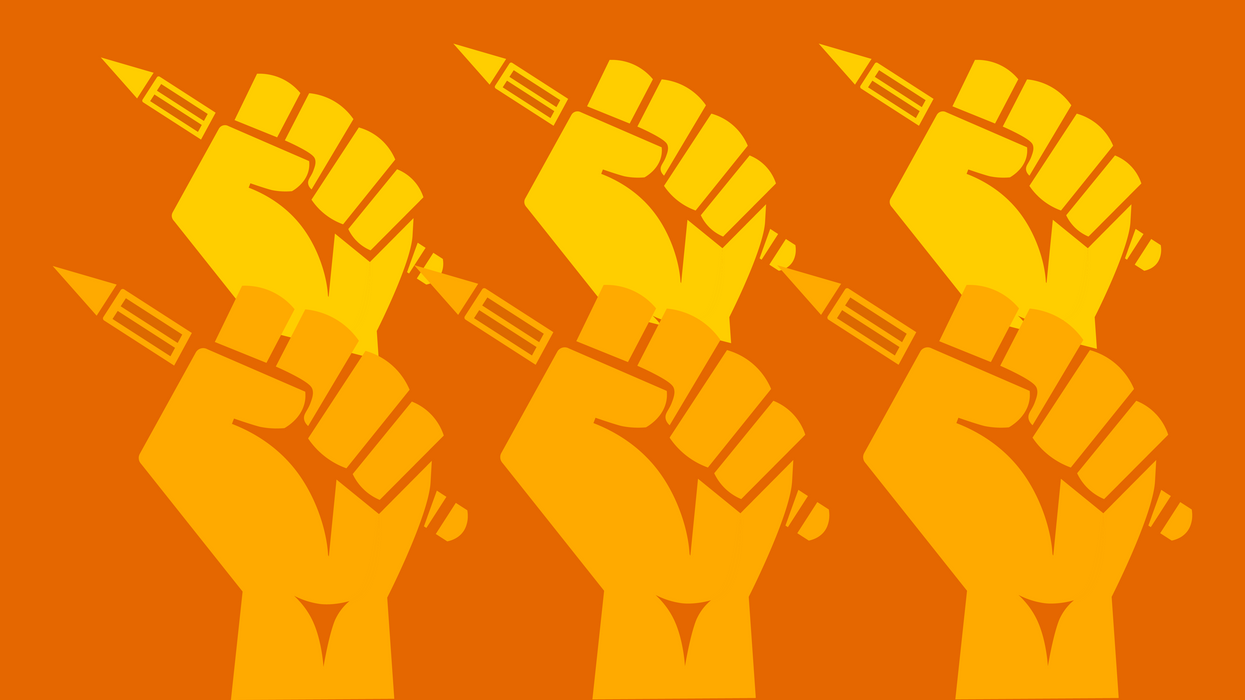Why the Latest Hollywood WGA Strike is Unlikely to Spark a Digital Media Boom

This is the web version of dot.LA’s weekly newsletter. Sign up to get the latest news on Southern California’s tech, startup and venture capital scene.
The last time Hollywood writers collectively went on strike against the Alliance of Motion Picture and Television Producers (AMPTP) was way back in November of 2007, when the internet looked very different from today. That strike ultimately lasted around 100 days, and in addition to the formal changes to how writers work and get paid, it also permanently shifted the digital media landscape, and led to all sorts of other unexpected ripple effects and consequences as well. (A new piece in LAist even suggests that the 2007 WGA strike may have pushed California into a recession before the rest of the country.)
How podcasting became a go-to for writers during the 2007 strike
The sudden loss of work writing for television and film pushed writers to explore new creative avenues that were just opening up at the time, such as podcasting, blogging, or posting videos to YouTube. Joss Whedon’s massively influential musical web series “Dr. Horrible’s Sing-Along Blog” came together because the then-beloved showrunner and his celebrity friends suddenly found themselves with no day jobs and a lot of extra time on their hands. Whedon was inspired by a different web series from “Dr. Horrible” co-star Felicia Day, “The Guild,” which had premiered on YouTube just a few months before the strike started in July 2007.
2005 is typically considered the breakout year for podcasting. The New Oxford American Dictionary named it “the word of the year” in ‘05, Yahoo! introduced its first “podcast search” product, and the White Houes began delivering President George W. Bush’s weekly addresses in a podcast format. Two years later, when comedians and writers were in need of new temporary projects to fill some time and keep their names in the pop culture consciousness, starting a podcast was a natural and obvious new outlet. A flood of amateur comedy podcasts hit the internet throughout 2006-2008, leading more established comedians like Marc Maron and Adam Carolla to enter the fray just a few years later, in 2009.
The 2007 strike also gets a lot of blame for a renewed interest in reality TV, that might have even kept Donald Trump’s “The Apprentice” for a few extra years, but Vanity Fair suggests this connection might be overblown. After all, reality shows were already a considerable mainstream hit by the mid ‘00s.
It’s fun to speculate what kinds of new media projects could get a boost this time out from writers who are temporarily pushed out of their day jobs. Certainly, VR and metaverse applications could use a new influx of innovation and creativity. The flagging market for non-true crime documenataries could get a boost as streamers desperately look around for more kinds of content to supplement their libraries. And, of course, someone needs to keep training all these AI chatbots.
Why the latest strike is unlikely to inspire the same media renaissance
Still, it’s unlikely that the new 2023 strike will directly lead to an interest in different kinds of digital media, as it did in 2007. Mainly because the digital media side of the industry has changed so much in the last decade and a half, including regulations about what kinds of work writers can do and a shift in baseline incentives for exploring new platforms.
In 2007, digital media remained a largely unexplored and unregulated frontier. Netflix was still primarily thought of as a DVD rental service. “Livestreaming” was a weird hobby by which individuals would give up their privacy and share every aspect of their daily routine, rather than a mainstream genre of video in which people play video games or watch movie trailers along with their friends and followers. The idea that an individual could build up a global following by recording themselves eating a large meal or playing Dungeons & Dragons or dancing to a K-pop song remained purely theoretical.
Today, these outlets and content offerings are much better known and understood, but also far more corporatized, established, and regulated, making it extremely unlikely that any disaffected TV writers will jump over to YouTube and make something like “Dr. Horrible” again. Rather than being a fun, experimental sandbox for side projects, YouTube is now a mainstream and established platform with a Hollywood economy all of its own. Whedon was seen in 2007 as a bold innovatorfor taking his talents to a brand new and exciting platform; today, in the eyes of Gen Z, jumping to YouTube as a workaround makes him a “scab.”
There are also some new regulations that might stymie writers’ attempts to broaden their horizons during the strike. Obviously, working on any professional film, TV or new media writing projects is expressly prohibited. The WGA also bars members from working on scripted fiction podcasts for any Minimum Basic Agreement (MBA) signatory, which includes jobs for big studios producing their own in-house podcasting projects. (Marvel Comics’ audio series would fit under this definition.) For the most part, it’s permissible for WGA writers to contribute to non-union podcasts, including productions for big studios like Ringer, Gimlet, and Parcast. Similar rules outline what work WGA members can take on video games.
Do writers even want these jobs in the first place?
Podcasts are much less novel in 2023 than they were in 2007, and the landscape is much more competitive for new players, even successful Hollywood-affiliated writers and comedians. In addition, this current strike hits at an uncertain overall moment for the podcasting business, in which budget cuts by sponsors led to the end of what one veteran referred to as “the dumb money era.” New podcasts no longer persent an immediately and obviously viable way to maintain a public profile or to bring in a reliable bit of extra income.
With so many alternate entertainment options in general in 2023 – from podcasts and video games to internationally-produced TV shows and films – there are also concerns among some writers about leverage. If Americans don’t immediately notice that there’s less content, and change their viewership and subscription habits, it hurts the writers’ argument that they deserve a larger share of the pie.
Some of this also relates back to the overall role of the tech business in the fight this time around. In 2007, the writers’ fight was with the conventional Hollywood establishment. Studio chiefs and media companies were attempting to adjust to the new reality of “streaming” and what it might mean for the future of entertainment, and writers wanted to ensure that they had a seat at the table for these discussions. In 2023, some of these legacy businesses remain intact, but the new power players are, in large part, the tech companies themselves, with writers sitting across from representatives of Amazon, Apple, and Netflix during negotiations.
Obviously, they’re going to be less enthusiastic about jumping on to other platforms owned by these same companies, some of which are adopting increasingly corporate payment and incentive structures of their own.
- With Streaming Platforms Circumventing Residual Payments, 2023 May Be the Year of the Next Writers Strike ›
- Wga Strike - dot.LA ›
- Don't Ask Chatbots for Movie Pitches. WGA Goes on Strike to Keep Hollywood Human ›
- The WGA Strike is About a Lot More Than Just Money ›





 Image Source: Tinder
Image Source: Tinder Image Source: Apple
Image Source: Apple